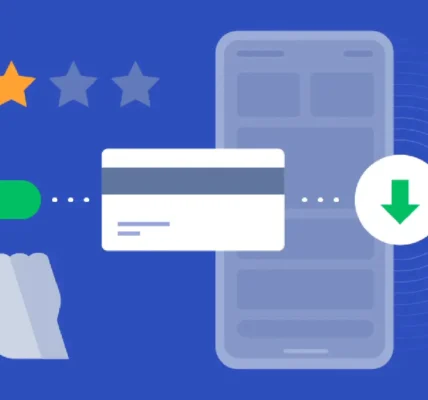Most mobile SaaS apps struggle with one key challenge: maximizing customer lifetime value (LTV). You acquire users, but they churn too fast. You offer premium features, but upgrades are low. The reason? You’re making decisions in the dark. Without a clear understanding of how users engage, what drives retention, and which actions predict long-term revenue, you’re leaving money on the table.
Analytics changes that. It helps you track user behavior, spot revenue leaks, and optimize your monetization strategies—turning casual users into long-term subscribers. This guide breaks down how to use analytics to increase LTV, from choosing key metrics to setting up advanced retention strategies using a tool like Amplitude.
Why Analytics is the Key to Maximizing LTV
Before diving into implementation, let’s define why analytics matters for LTV in mobile SaaS:
- It reveals high-value user segments: Not all users contribute equally to revenue. Analytics helps identify which user groups have the highest LTV so you can focus on retaining them.
- It uncovers retention drivers: By analyzing user behavior, you can see which actions correlate with long-term retention and push more users toward those behaviors.
- It helps reduce churn: Predictive analytics can highlight early churn signals, allowing you to intervene before users leave.
- It optimizes pricing strategies: Data helps you fine-tune your subscription tiers, discounts, and upsells based on user spending patterns.
Now, let’s break this down step-by-step.
1. Defining the Key Metrics That Drive LTV
Analytics is only useful if you track the right metrics. Here are the core ones that impact LTV:
Customer Lifetime Value (LTV)
The total revenue a customer generates before they churn. Formula:
LTV=(ARPU×GrossMargin)÷ChurnRateLTV = (ARPU \times Gross Margin) \div Churn Rate
- ARPU (Average Revenue Per User): Total revenue divided by active users.
- Churn Rate: Percentage of users canceling subscriptions over a period.
- Gross Margin: Revenue minus costs.
Retention Rate
Percentage of users who continue using your app over time.
- High retention = higher LTV
- Low retention = money wasted on user acquisition
Conversion Funnel Metrics
Track how users move from free trials to paid plans, identifying where they drop off. Key metrics:
- Trial-to-Paid Conversion Rate = % of trial users who become paying customers
- Feature Adoption Rate = % of users engaging with premium features
- Cancellation Reasons = Why users leave (survey responses, exit screens)
Now that we know what to track, let’s see how to collect this data.
2. Setting Up an Analytics Stack (Using Amplitude)
To increase LTV, you need granular user behavior data—not just surface-level reports from Google Analytics. A tool like Amplitude provides event-based tracking that helps uncover why users retain, upgrade, or churn.
Step 1: Implement Event Tracking
Amplitude lets you track in-app actions like:
- Signup sources – Where high-LTV users come from
- Feature usage – Which features keep users engaged
- Subscription renewals/cancellations – Spotting churn patterns
Example code for tracking events using Amplitude’s SDK (for React Native apps):
import amplitude from ‘amplitude-js’;
const amplitudeInstance = amplitude.getInstance();
amplitudeInstance.init(‘YOUR_API_KEY’);
// Track when a user starts a free trial
amplitudeInstance.logEvent(‘Start Free Trial’);
// Track when a user upgrades to a paid plan
amplitudeInstance.logEvent(‘Upgrade to Paid’, { plan: ‘Pro’ });
// Track when a user cancels their subscription
amplitudeInstance.logEvent(‘Cancel Subscription’, { reason: ‘Too Expensive’ });
Step 2: Create Behavioral Cohorts
Use analytics to segment users based on their actions. Example cohorts:
- High-LTV users – Users who upgraded within the first 7 days
- Churn-risk users – Users who haven’t used the app for 10+ days
- Power users – Users engaging with 80%+ of premium features
By tracking these cohorts, you can personalize retention strategies for each group.
3. Using Data to Improve Retention and Reduce Churn
Now that you’re tracking data, here’s how to apply it to boost retention.
Identify Retention-Driving Features
Look at what separates high-retention users from those who churn. Common insights:
- Users who complete onboarding have higher LTV → Optimize onboarding flow
- Users engaging with core features in the first 3 days retain longer → Guide new users to these features
- Users who connect with customer support stay longer → Encourage support interactions
Send Behavioral-Based Retention Campaigns
Once you identify churn-risk users, trigger automated actions:
- Inactive users (10+ days without activity): Send push/email reminders
- Users who engage with free features but don’t upgrade: Show targeted upsell offers
- Users who downgrade their plan: Offer personalized discounts
Example of an automated push campaign (using Firebase Cloud Messaging):
const message = {
notification: {
title: ‘Still interested in [App Name]?’,
body: ‘Come back and explore new features!’,
},
token: ‘USER_DEVICE_TOKEN’
};
admin.messaging().send(message);
4. Optimizing Pricing Strategies with Analytics
Your pricing model heavily impacts LTV. Here’s how analytics helps fine-tune it:
Analyze Pricing Sensitivity
Track user drop-off points in the subscription funnel:
- Are users abandoning checkout due to high prices?
- Do certain price points lead to higher cancellations?
- Do users upgrade when offered annual plans with discounts?
Test Different Subscription Models
Use A/B testing to compare different models:
- Freemium vs. free trial
- Monthly vs. annual pricing
- Basic vs. premium feature bundles
Example: If 20% of trial users convert on a $9.99/month plan, but 35% convert at $7.99/month, a price tweak could increase total LTV.
5. Forecasting LTV Growth with Predictive Analytics
To maximize revenue, you need to predict user behavior before it happens. AI-driven analytics tools (like Amplitude’s Predictive Analytics Engine) help with:
- Identifying early signs of churn (e.g., 3+ days of inactivity)
- Forecasting user spending trends (e.g., which users will upgrade in 30 days)
- Personalizing in-app experiences (e.g., showing different onboarding for high-LTV users)
Final Thoughts: Turn Data into Growth
Using analytics to increase LTV is not just about tracking numbers—it’s about using data to drive action. To recap:
- Track the right metrics – LTV, retention, churn, conversions
- Use event-based analytics tools like Amplitude for deeper insights
- Segment users based on behavior and target high-LTV groups
- Optimize pricing strategies using A/B testing and sensitivity analysis
- Leverage predictive analytics to proactively reduce churn
The apps that win in mobile SaaS aren’t just the ones with great features—they’re the ones that use data to maximize customer value. Implement these strategies, and your app’s LTV will skyrocket.




